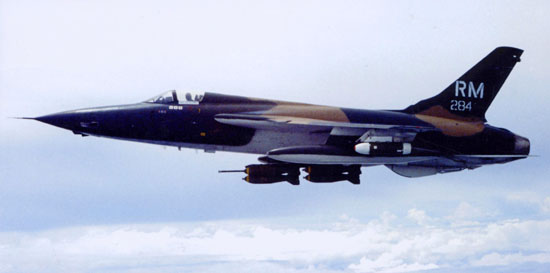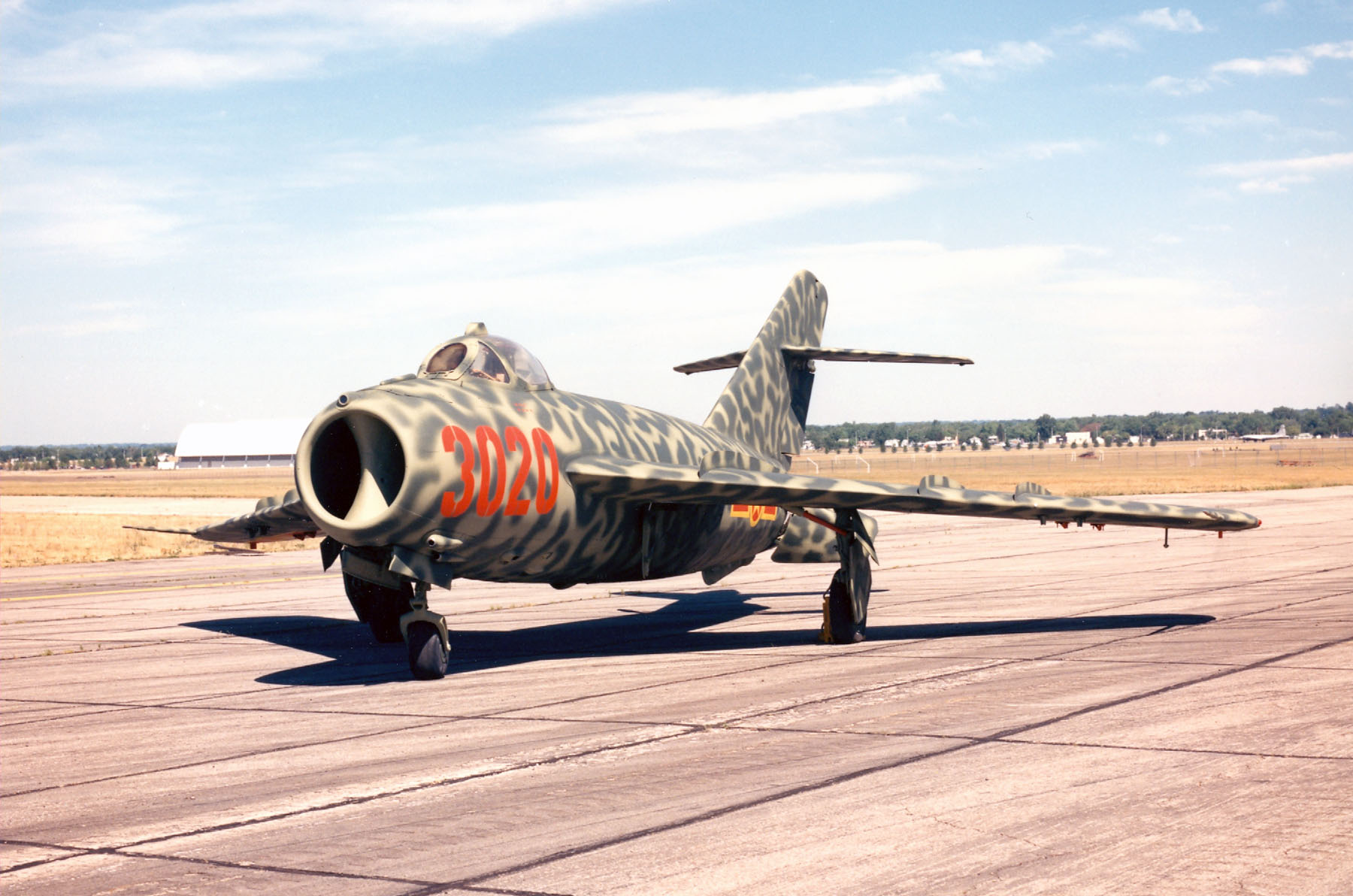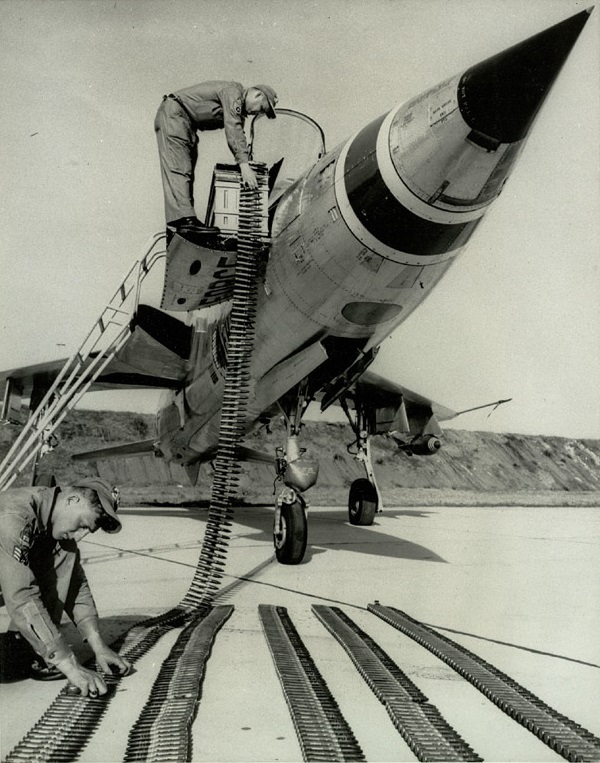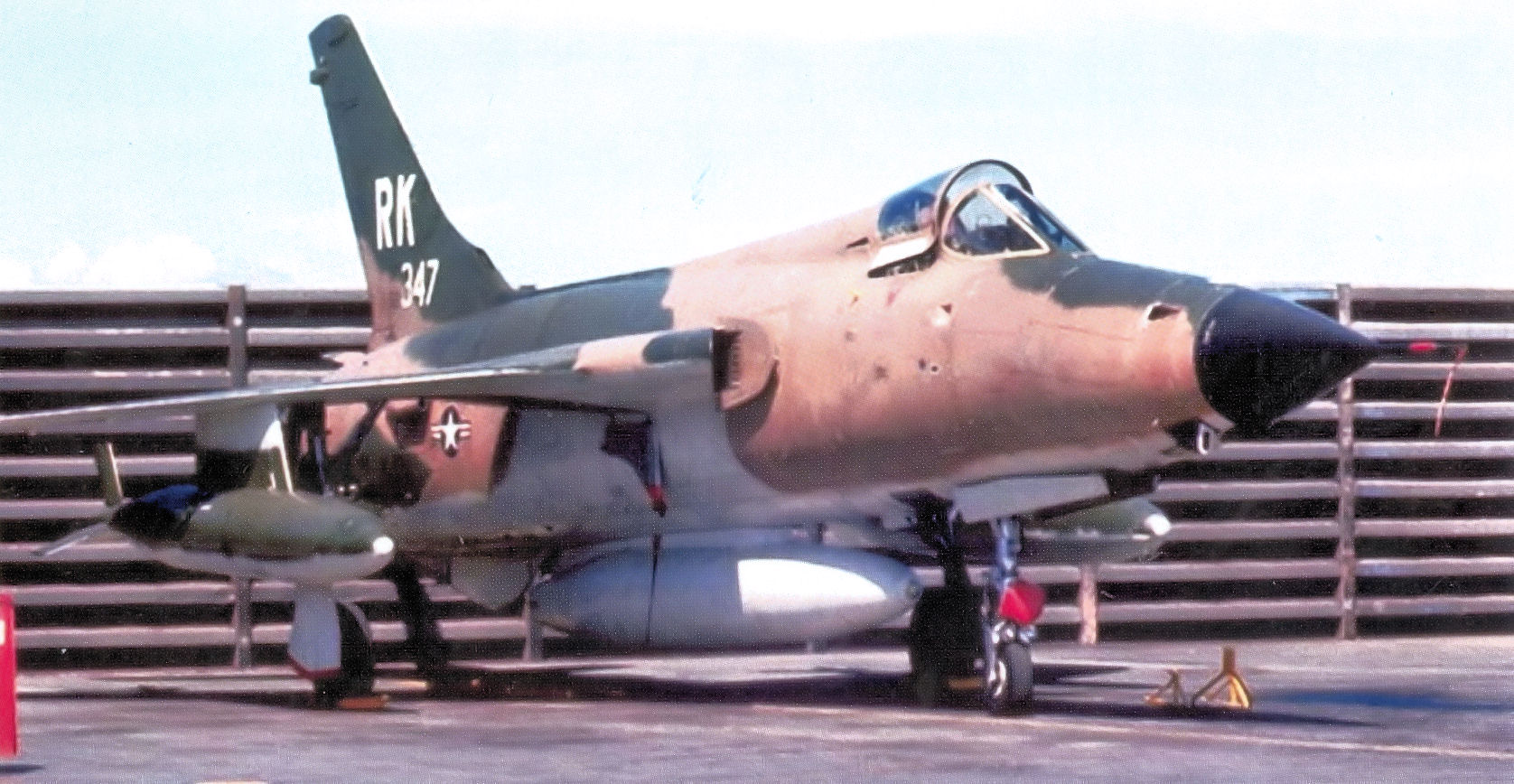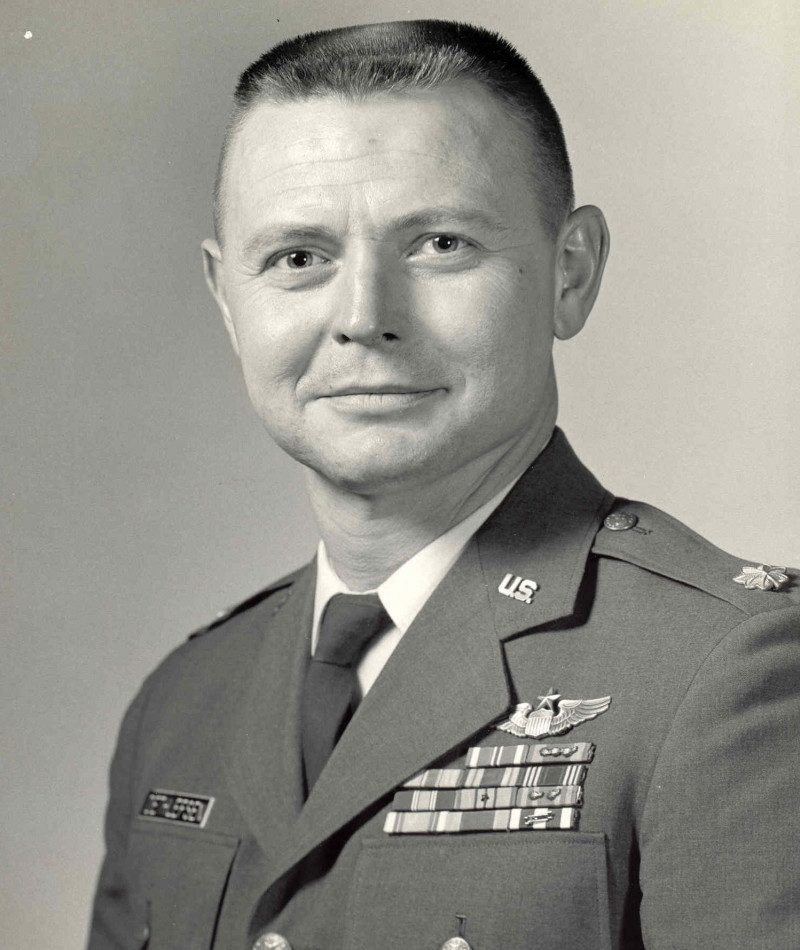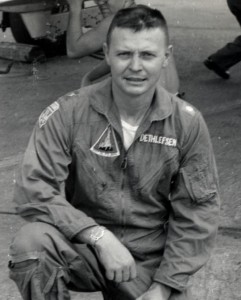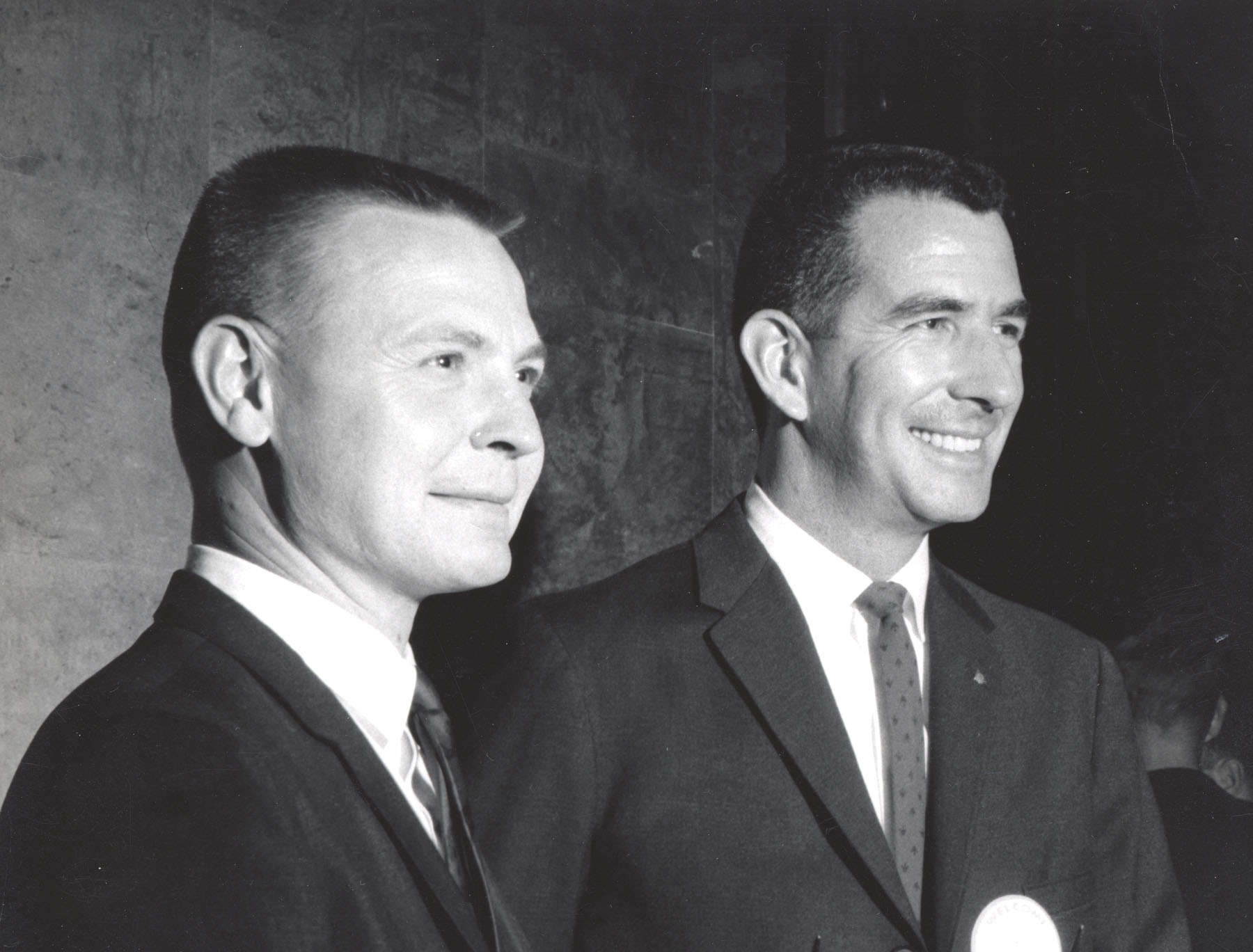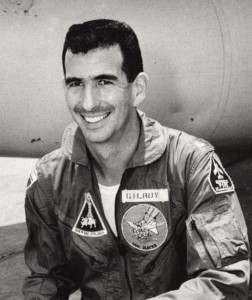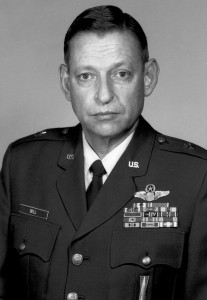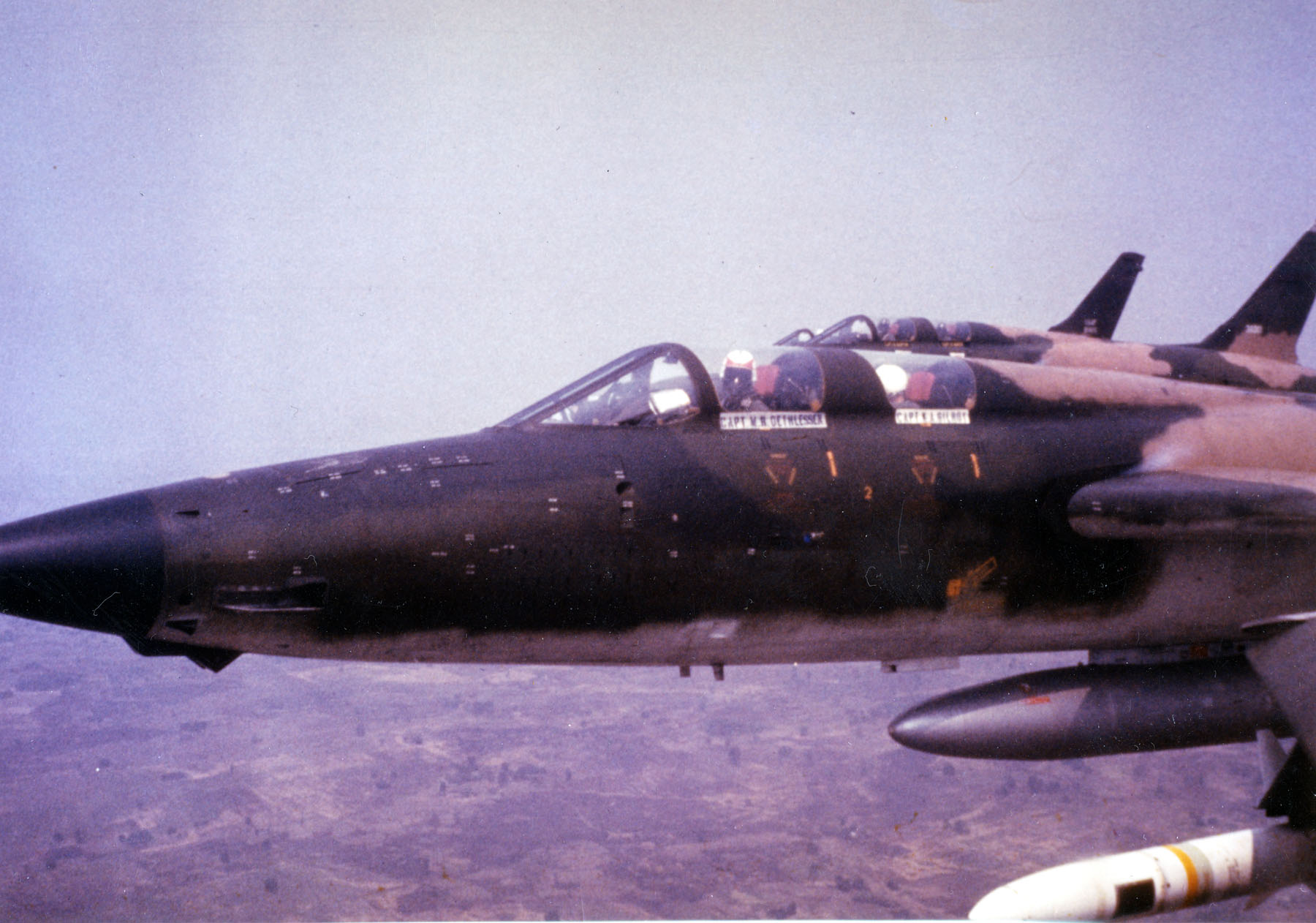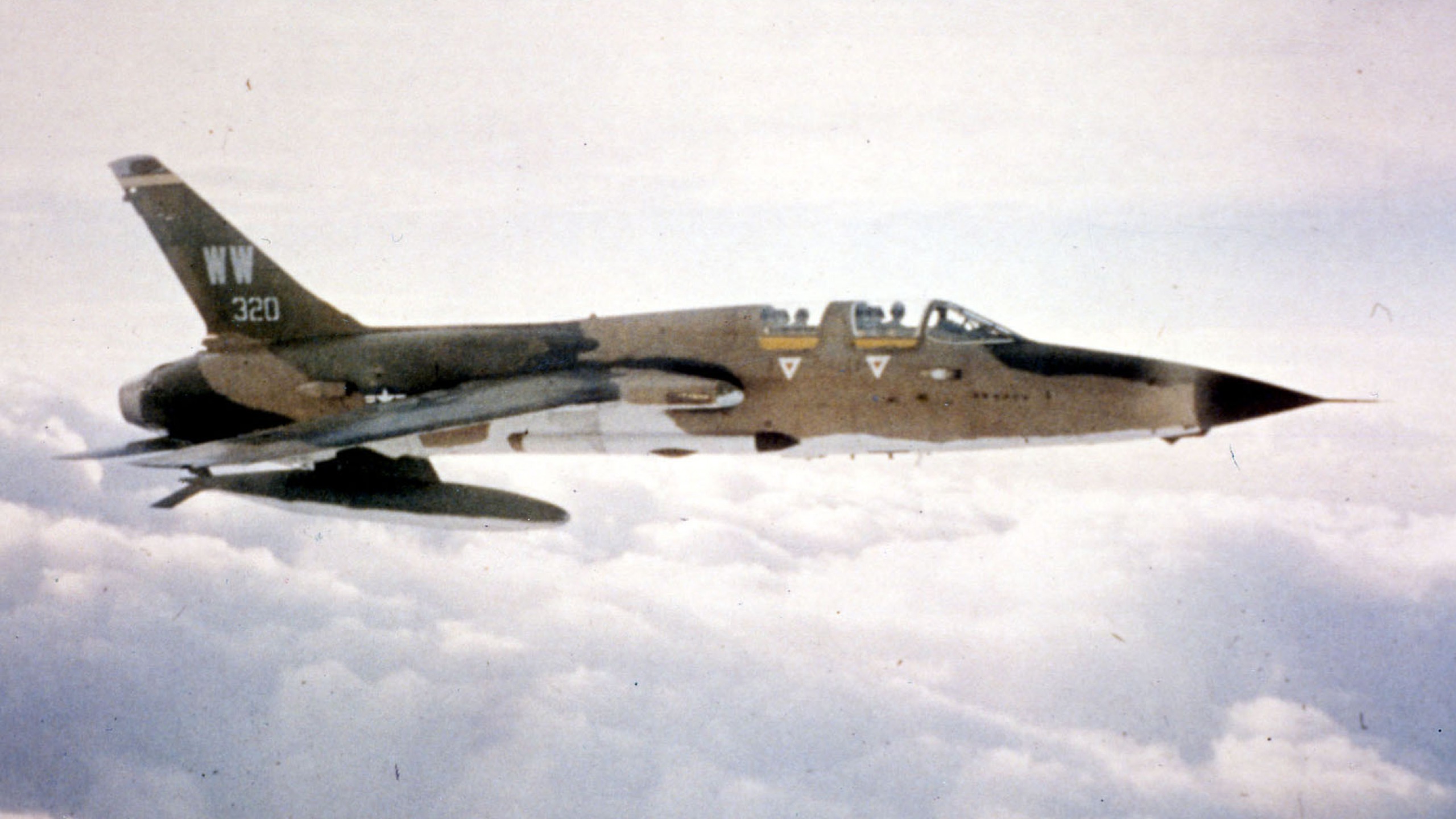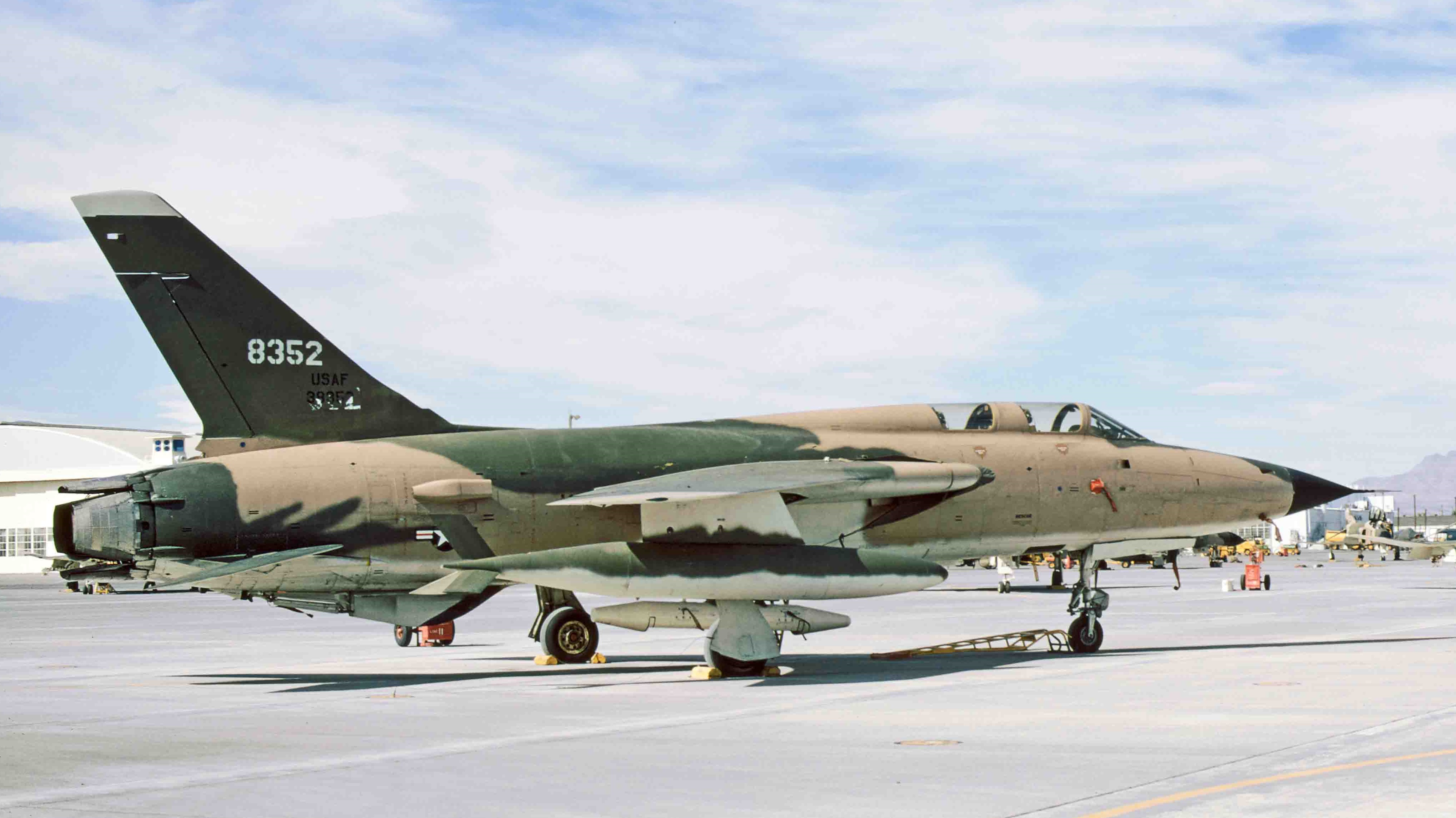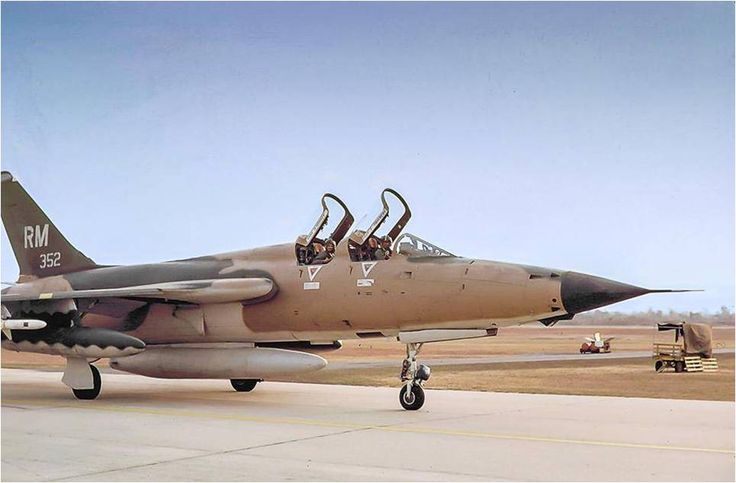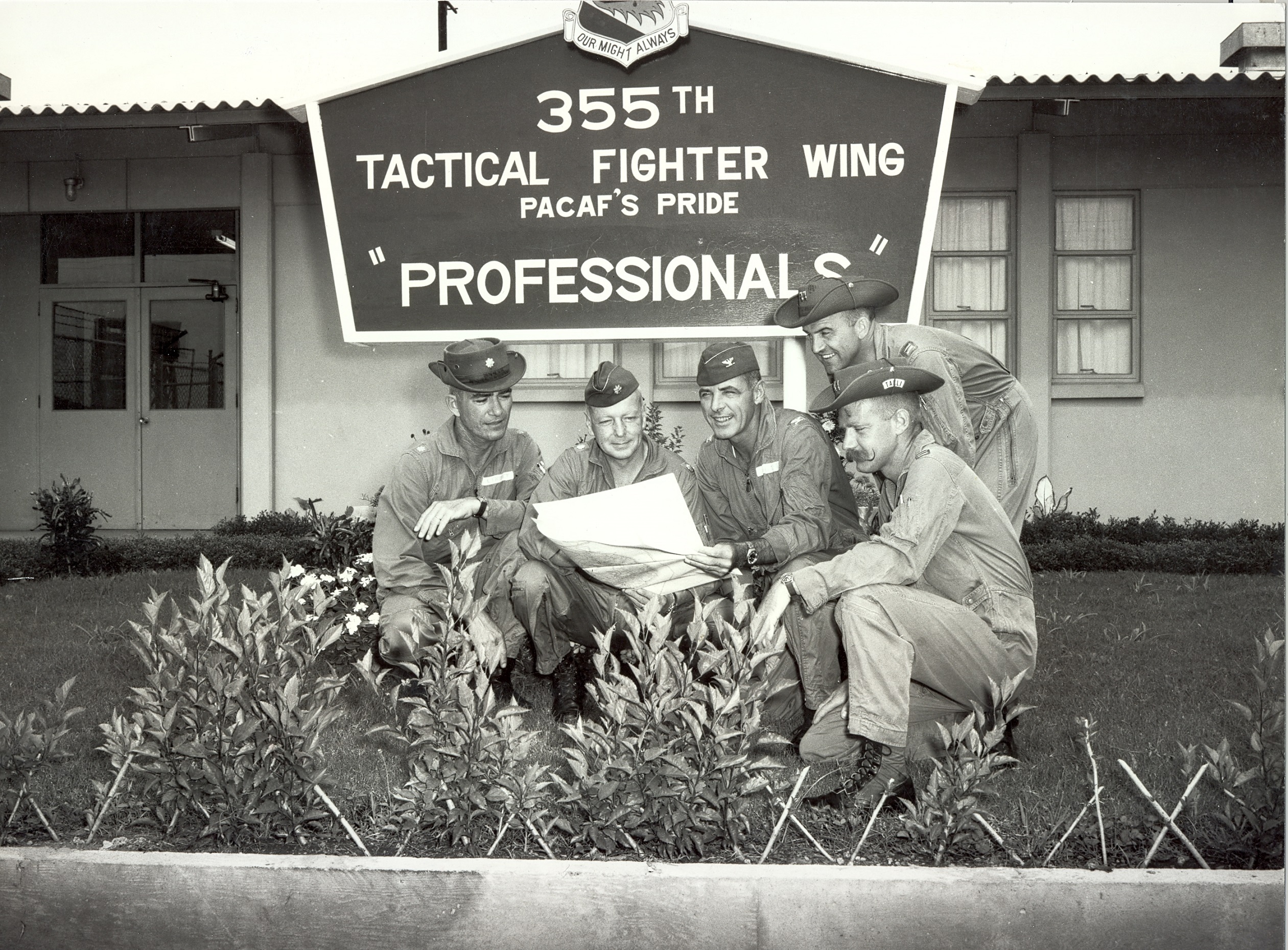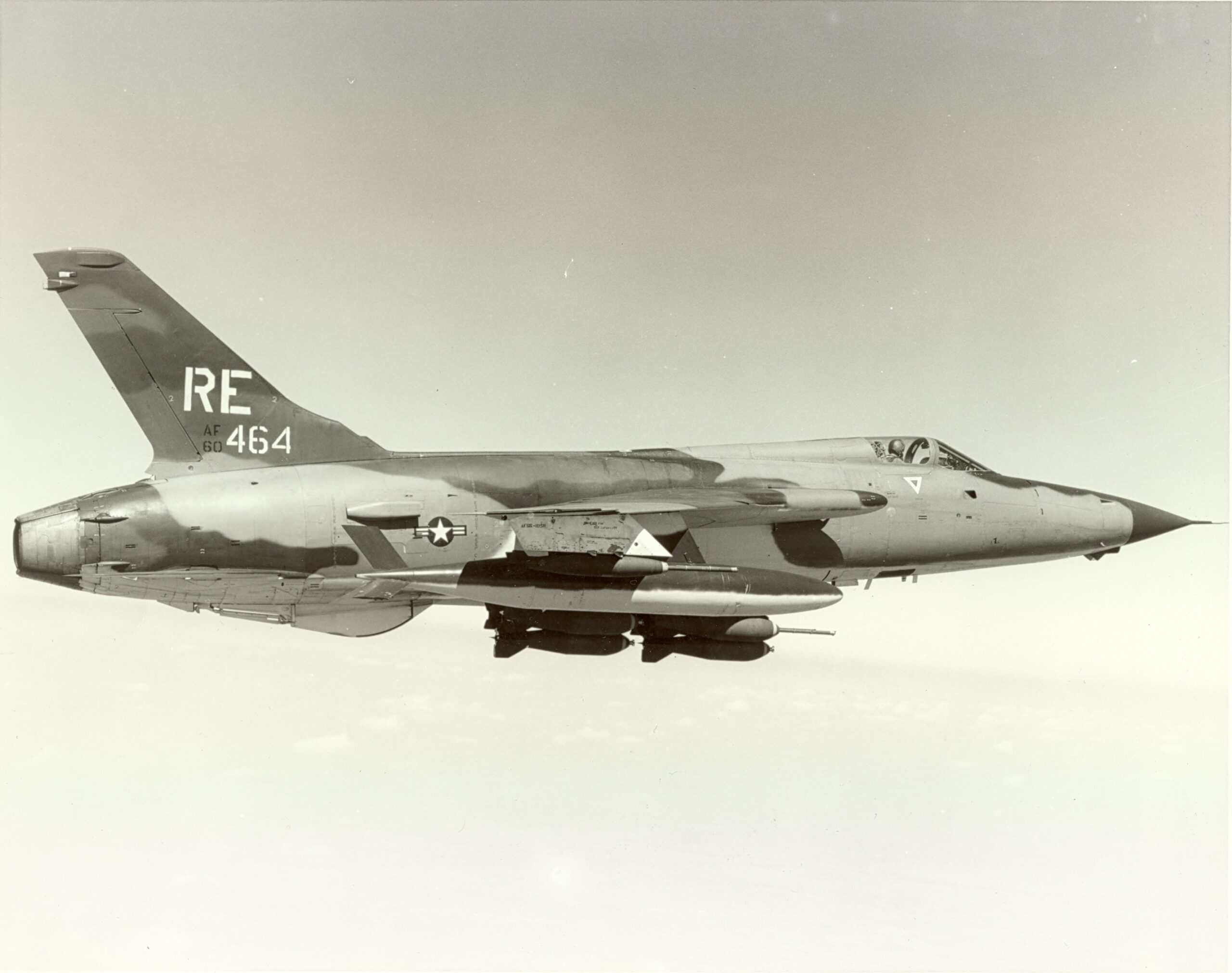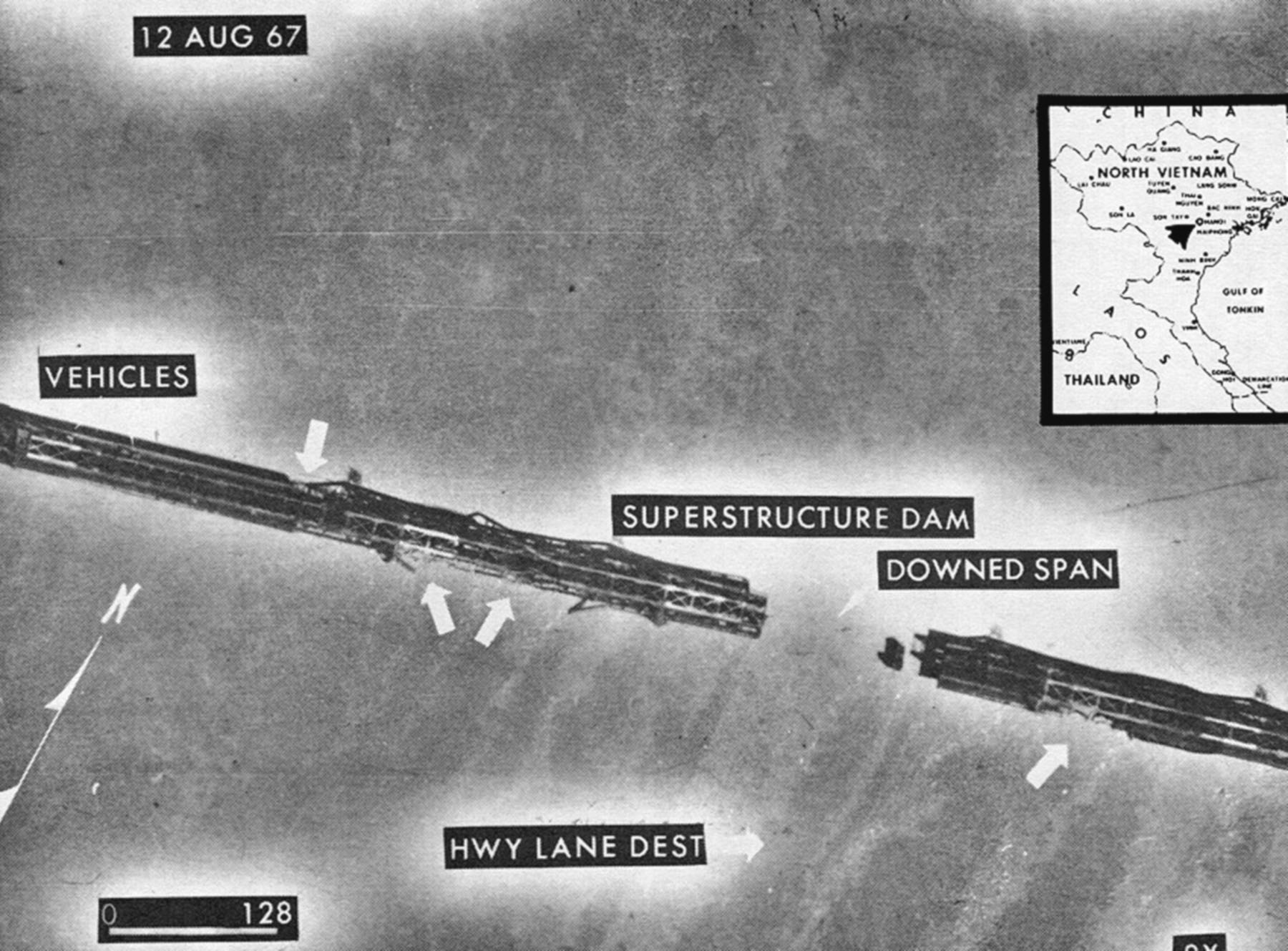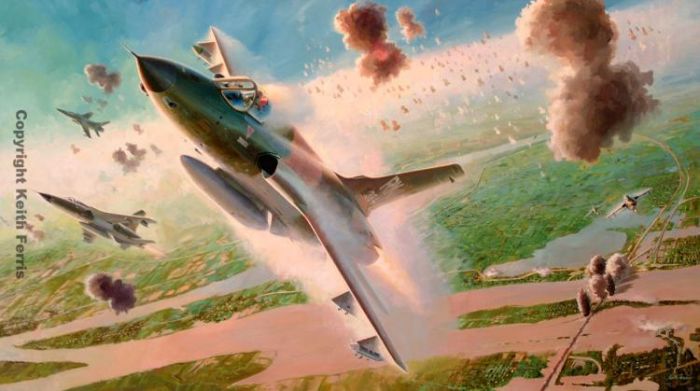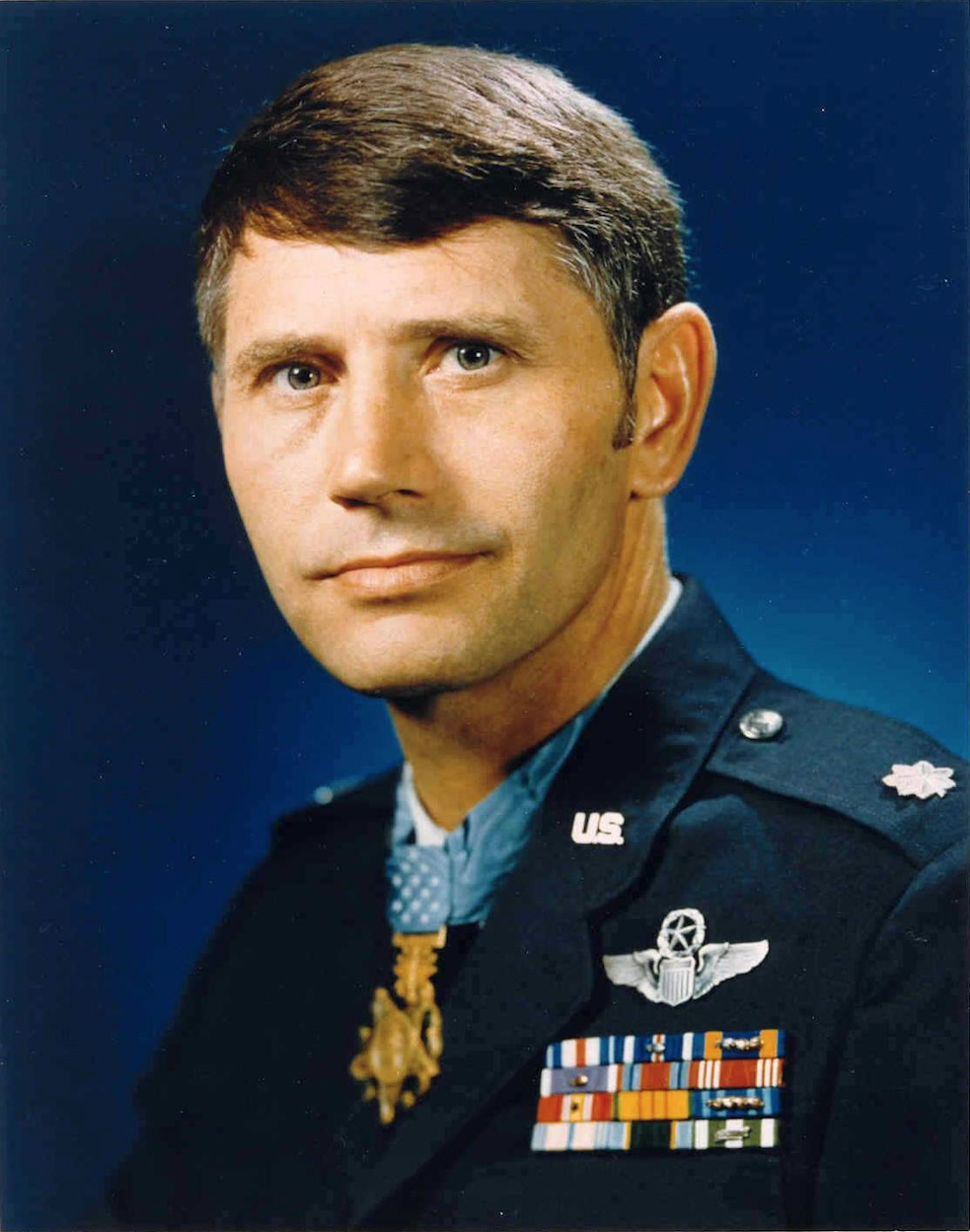
MEDAL OF HONOR
LIEUTENANT COLONEL LEO K. THORSNESS
UNITED STATES AIR FORCE
Place and date: Over North Vietnam, 19 April 1967.
Entered service at: Walnut Grove, Minn.
Born: 14 February 1932, Walnut Grove, Minn.
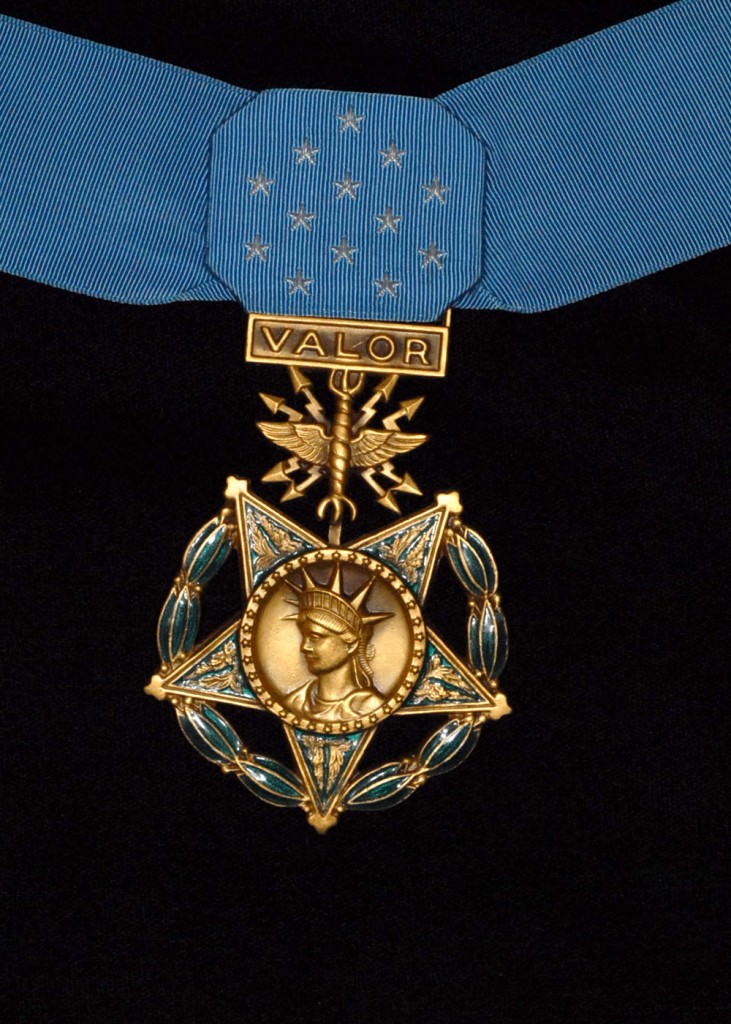 Citation: For conspicuous gallantry and intrepidity in action at the risk of his life above and beyond the call of duty. As pilot of an F- 105 aircraft, Lt. Col. Thorsness was on a surface-to-air missile suppression mission over North Vietnam. Lt. Col. Thorsness and his wingman attacked and silenced a surface-to-air missile site with air-to-ground missiles, and then destroyed a second surface-to-air missile site with bombs. In the attack on the second missile site, Lt. Col. Thorsness’ wingman was shot down by intensive antiaircraft fire, and the 2 crewmembers abandoned their aircraft. Lt. Col. Thorsness circled the descending parachutes to keep the crewmembers in sight and relay their position to the Search and Rescue Center. During this maneuver, a MIG-17 was sighted in the area. Lt. Col. Thorsness immediately initiated an attack and destroyed the MIG. Because his aircraft was low on fuel, he was forced to depart the area in search of a tanker. Upon being advised that 2 helicopters were orbiting over the downed crew’s position and that there were hostile MiGs in the area posing a serious threat to the helicopters, Lt. Col. Thorsness, despite his low fuel condition, decided to return alone through a hostile environment of surface-to-air missile and antiaircraft defenses to the downed crew’s position. As he approached the area, he spotted 4 MIG-17 aircraft and immediately initiated an attack on the MlGs, damaging 1 and driving the others away from the rescue scene. When it became apparent that an aircraft in the area was critically low on fuel and the crew would have to abandon the aircraft unless they could reach a tanker, Lt. Col. Thorsness, although critically short on fuel himself, helped to avert further possible loss of life and a friendly aircraft by recovering at a forward operating base, thus allowing the aircraft in emergency fuel condition to refuel safely. Lt. Col. Thorsness’ extraordinary heroism, self-sacrifice, and personal bravery involving conspicuous risk of life were in the highest traditions of the military service, and have reflected great credit upon himself and the U.S. Air Force.
Citation: For conspicuous gallantry and intrepidity in action at the risk of his life above and beyond the call of duty. As pilot of an F- 105 aircraft, Lt. Col. Thorsness was on a surface-to-air missile suppression mission over North Vietnam. Lt. Col. Thorsness and his wingman attacked and silenced a surface-to-air missile site with air-to-ground missiles, and then destroyed a second surface-to-air missile site with bombs. In the attack on the second missile site, Lt. Col. Thorsness’ wingman was shot down by intensive antiaircraft fire, and the 2 crewmembers abandoned their aircraft. Lt. Col. Thorsness circled the descending parachutes to keep the crewmembers in sight and relay their position to the Search and Rescue Center. During this maneuver, a MIG-17 was sighted in the area. Lt. Col. Thorsness immediately initiated an attack and destroyed the MIG. Because his aircraft was low on fuel, he was forced to depart the area in search of a tanker. Upon being advised that 2 helicopters were orbiting over the downed crew’s position and that there were hostile MiGs in the area posing a serious threat to the helicopters, Lt. Col. Thorsness, despite his low fuel condition, decided to return alone through a hostile environment of surface-to-air missile and antiaircraft defenses to the downed crew’s position. As he approached the area, he spotted 4 MIG-17 aircraft and immediately initiated an attack on the MlGs, damaging 1 and driving the others away from the rescue scene. When it became apparent that an aircraft in the area was critically low on fuel and the crew would have to abandon the aircraft unless they could reach a tanker, Lt. Col. Thorsness, although critically short on fuel himself, helped to avert further possible loss of life and a friendly aircraft by recovering at a forward operating base, thus allowing the aircraft in emergency fuel condition to refuel safely. Lt. Col. Thorsness’ extraordinary heroism, self-sacrifice, and personal bravery involving conspicuous risk of life were in the highest traditions of the military service, and have reflected great credit upon himself and the U.S. Air Force.
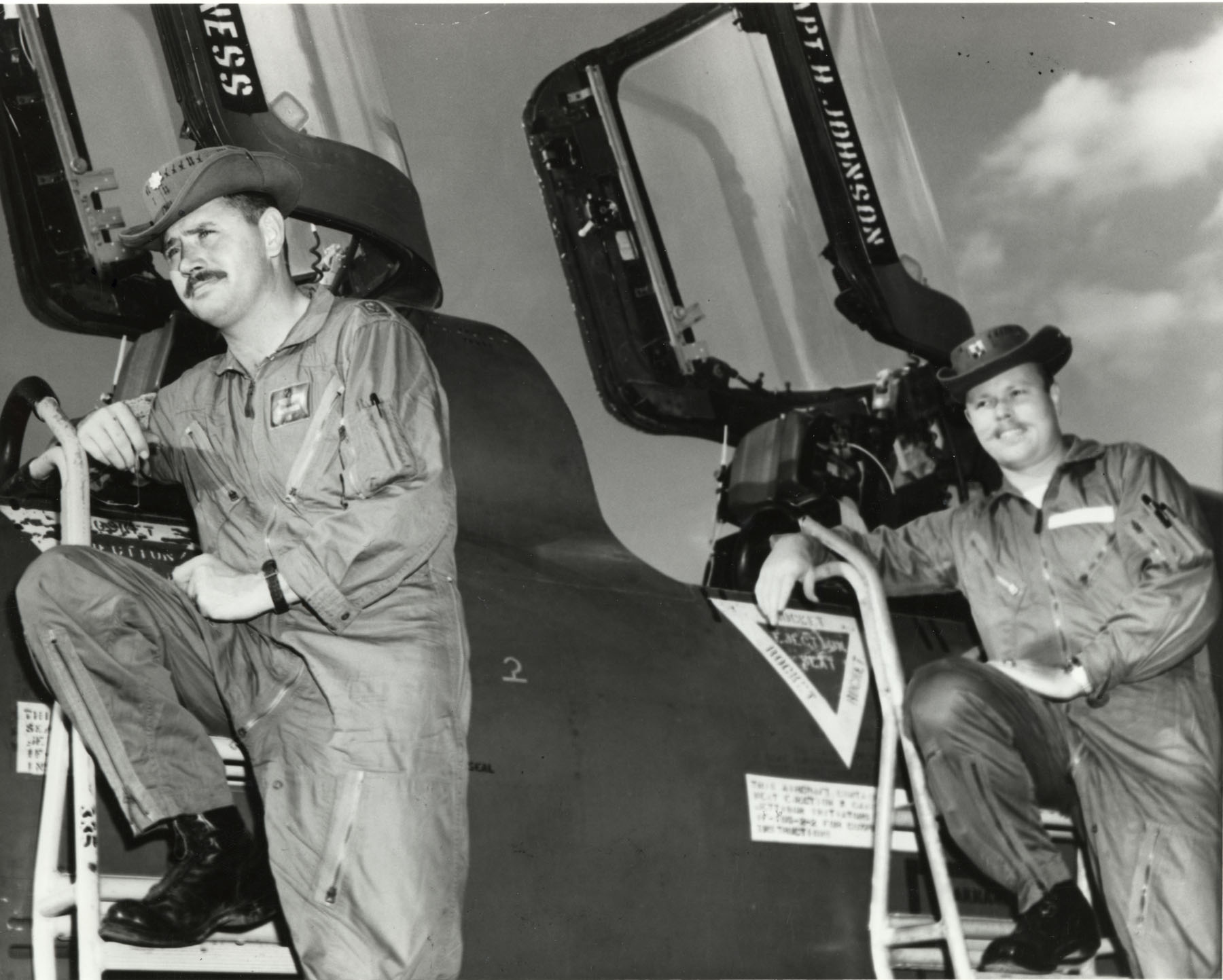
AIR FORCE CROSS
CAPTAIN HAROLD EUGENE JOHNSON
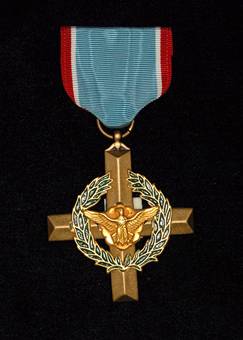
The President of the United States of America, authorized by Title 10, Section 8742, United States Code, takes pleasure in presenting the Air Force Cross to Captain Harold Eugene Johnson (AFSN: 0-3116556/42372A), United States Air Force, for extraordinary heroism as Electronics Warfare Officer of an F-105 aircraft of the 357th Tactical Fighter Squadron, 355th Tactical Fighter Wing, Tuy Hoa Air Base, Vietnam, engaged in a pre-strike, missile suppression mission over North Vietnam on 19 April 1967. On that date, Captain Johnson guided his pilot in attacking and destroying a surface-to-air missile installation with an air-to-ground missile. Through his technical skill, he immediately detected a second missile complex and guided the pilot into visual contact. Diving into a deadly barrage of anti-aircraft fire, his aircraft bombed and successfully destroyed this site. In the attack on this second missile site, a wingman was shot down by the intense anti-aircraft fire, and the crew members were forced to abandon their aircraft. Flying through hostile missile threats, Captain Johnson’s aircraft engaged and destroyed a MiG-17 while attacking a superior MiG force. He aided in the rescue efforts for the downed crew, engaged additional MiGs, and damaged one in the encounter. Through his extraordinary heroism, superb airmanship, and aggressiveness, Captain Johnson has reflected the highest credit upon himself and the United States Air Force.
General Orders: Department of the Air Force, Special Order GB-363 (April 19, 1967)
Action Date: 19-Apr-67
Service: Air Force
Rank: Captain
Company: 357th Tactical Fighter Squadron
Regiment: 355th Tactical Fighter Wing
Division: Tuy Hoa Air Base, Vietnam
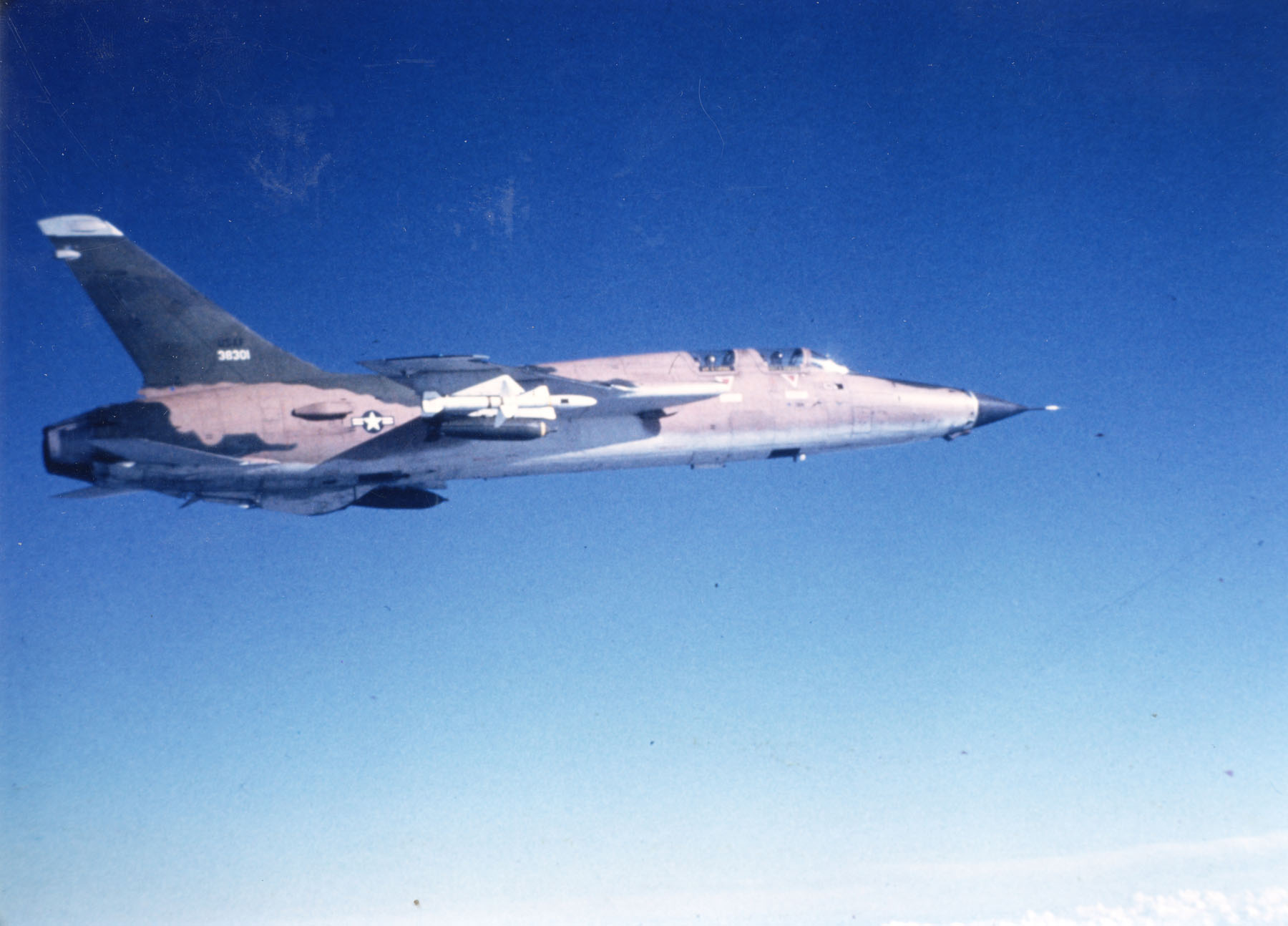
A description of the air battle follows:
The first MiG kill of the day was recorded by Maj. Leo K. Thorsness, pilot, and Capt. Harold E. Johnson, Electronic Warfare officer (EWO), flying an F-105F. Thorsness’ flight consisted of four F-105F Wild Weasel aircraft, each plane being manned by a pilot and EWO and being specially equipped to locate and attack SAM sites. The flight was ahead of the main strike force and was committed to suppress SAM activity in the target area. About 8 to 10 MiG-17s attacked as the flight prepared to strike a SAM radar site with Shrike air-to-ground missiles. The Thorsness flight split up into three parts: the third and fourth aircraft entered into separate MiG engagements while Thorsness and his wingman continued the attack against the radar. The time was then about 4:55 p.m. Johnson provides an account of the encounter:
We found and delivered our ordnance on an occupied SAM site. As we pulled off the site heading west, Kingfish 02 ¹ called that he had an overheat light. He also headed west, and the crew, Majors Thomas M. Madison, pilot, and Thomas J. Sterling, EWO, had to eject from their aircraft. We headed toward them by following the UHF-DF steer we received from their electronic beepers and saw them in the chutes. . .
As we circled the descending crew, we were on a southerly heading when I spotted a MiG-17 heading east, low at out 9 o’clock position. I called him to the attention of Major Thorsness. . . .
Thorsness continued the story:
The MiG was heading east and was approximately 2,500 feet mean sea level. We were heading southeast and at 8,000 feet MSL. I began “S” turning to get behind the MiG. After one and a half “S” turns the MiG had progressed from the foothills over the delta southwest of Hanoi. The MiG turned to a northerly heading, maintaining approximately the same altitude and airspeed. Captain Johnson continued to give me SAM bearings, SAM-PRF [pulse recurrence frequency] status and launch indications as I continued to maneuver to attain a 6 o’clock position on the MiG.
The first burst of approximately 300 rounds of 20 mm was fired from an estimated 2,000–1,500 feet in a right hand shallow pursuit curve, firing with a cased sight reticle. No impacts were observed on the MiG. Within a few seconds we were in the 6 o’clock position with approximately 75 to 100 knots overtake speed. I fired another burst of approximately 300 rounds of 20 mm. I pulled up to avoid both the debris and the MiG. While pulling up I rolled slightly to the right, then left. The MiG was approximately 100 feet low and to our left, rolling to the right. The two red stars were clearly discernible, one on top of each wing, and several rips were noted on the battered left wing. We continued to turn to the left and after turning approximately 130° again sighted the MiG, still in a right descending spiral. Just prior to the MiG’s impacting the ground, Captain Johnson sighted a MiG-17 at our 6:30 position approximately 2,000 feet back. I pulled into a tighter left turn, selected afterburner, and lowered the nose. I again looked at the crippled MiG, saw it impact the ground in what appeared to be a rice field. After confirming the MiG had in fact impacted the ground I made a hard reversal and descended very near the ground, heading generally westerly into the foothills.
Thorsness then left the battle area, but returned after refueling to provide rescue combat air patrol during the search for his wingman’s aircrew. Thorsness and Johnson attacked another MiG and scored some damaging hits before they were themselves attacked by other MiG-17s. Although it is highly probable that Thorsness and Johnson destroyed a second MiG, this kill was not confirmed.
— Aces and Aerial Victories: The United States Air Force in Southeast Asia 1965–1973, by R. Frank Futrell, William H. Greenhalgh, Carl Grubb, Gerard E. Hasselwander, Robert F. Jakob and Charles A. Ravenstein, Office of Air Force History, Headquarters USAF, 1976, Chapter II at Pages 46 and 47.
Eleven days later, 30 April 1967, Major Thorsness and Captain Johnson were shot down by an AA-2A Atoll heat-seeking missile fired by a MiG-21 fighter piloted by Vũ Ngọc Đỉnh, 921st Fighter Regiment, Vietnam People’s Air Force. They ejected but were captured. Both men were held as Prisoners of War until 4 March 1973.
Colonel Leo Keith Thorsness, United States Air Force (Retired) died Tuesday, 2 May 2017, at St. Augustine, Florida. He was 85 years of age.
¹ Radio call sign for aircraft 2.
© 2019, Bryan R. Swopes
